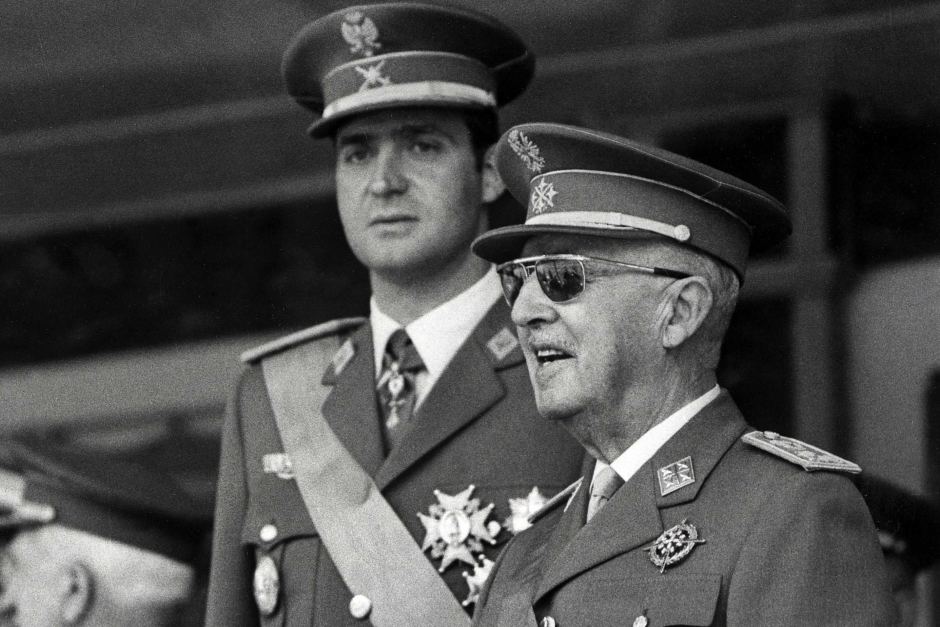Spain’s history over the 20th century is one filled with conflict and pain that has not quite yet healed. From what you can see in the news and what I can tell you as a Spanish citizen, it is a very divisive country. When it comes to politics and other national affairs, we can be extremely passionate. It is this lack of national consensus over many key questions and a tendency to make a national crisis off every problem that has arguably prolonged one of Spain’s biggest shames over more than 40 years: our far-right dictator is still buried in one of the most important monuments in the country.
But, how did we get here? This is quite a complex question to answer because you don’t want to read an in-depth account of the history of what can probably be the most questionable politics ever, neither do I want to bore you with it – so I’ll try and be as concise as possible.
Back in the 1930s, there was a democratic Republic. It didn’t last for long (it was created in 1931), but during that period there was a clear drift of power towards far-left politics. Extremely unsatisfied with this situation, the military carried out a coup d’état, which did not have enough backing to succeed. This failure led to a Civil War which lasted between 1936 and 1939, one of the bloodiest and most horrifying events of Spanish history. This war confronted the Republicans (progressives, communists and anarchists) and the “Nationals” (military, fascists and conservative Catholics with the support of Hitler and Mussolini). After 3 years of war, the “Nationals” defeated the Republicans, establishing a dictatorship around the figure of Francisco Franco which lasted until his death in 1975.
Soon after his victory, Franco ordered the construction of a monument to commemorate what he thought was his “glorious crusade”. This memorial is known as the Valle de los Caídos (“valley of the fallen”) and was built with war prisoners labour. It is comprised of the biggest Catholic cross in the world and a basilica, where Franco and the founder of the Falange Española (the Spanish fascist party), Jose Antonio Primo de Rivera, are buried.

Almost 45 years later, Franco is still buried here, making him the only European fascist dictator with such an honorary burial site. Alongside him, more than 33,700 people from both sides of the conflict are also buried in a mass grave within the Valle, making it the biggest of its kind in the country. Taking into account the oppression and persecution his figure signifies, and the amount of pain he has caused to Spanish citizens for decades, the fact that no democratic government (before 2018) did anything to change this situation is unacceptable. The Valle de los Caídos should be a memorial of those who died during a horrific conflict, not a celebration of the oppression many suffered over generations.
It has been the elephant in the room for decades, and it wasn’t until very recently that the current government (led by the Spanish Socialist Workers’ Party) committed to finally exhuming Franco. However, this did not come without considerable resistance and reprobation from the right-wing parties. Both centre-right parties (Citizens and People’s Party) consider this a waste of money which attempts to divide Spain. Quite ironic, taking into account the country is already being divided because of him being buried in the Valle. On the other hand, far-right party Vox is structurally against anything that might favour the History Memory Law, aimed towards compensating those who suffered violence and prosecution during the dictatorship.
More concerning than the diminishing of this issue by political parties is the open support of the pre-constitutional leader and its dictator by a concerning portion of Spanish society, showing absolute rejection and anger to the exhumation. Very recently, during the celebration of Spain’s National Holiday, a crowd of agitated extremists held fascist flags and insulted the Prime Minister during the public event. This is not unusual at all: every once in a while, you will see protests of this kind in major cities around Spain. Focusing on the figure of Franco, ever since the government promised to exhume his body, the visits to the Valle have increased 103%, reaching over 4,000 people ever weekend. Anyone would expect this glorification of Franco and his dictatorship to be exclusive of older generations who actually lived during that period, but a shocking number of young people fiercely support him.
Franco’s corpse’s unnecessarily long stay at the Valle de los Caídos is coming to an end soon, hopefully allowing this old wound to heal over time. In a week’s time, the dictator’s body will be moved to the cemetery of Mingorrubio. We could consider Franco to be extremely lucky. Hitler’s corpse was never found; Stalin’s bones are lost in a mass grave; Mussolini’s body was vexed to the extent that it was truly unrecognisable. A proper grave in a cemetery close to his relatives is a privilege most of his kind will never enjoy.
Image: ABC

